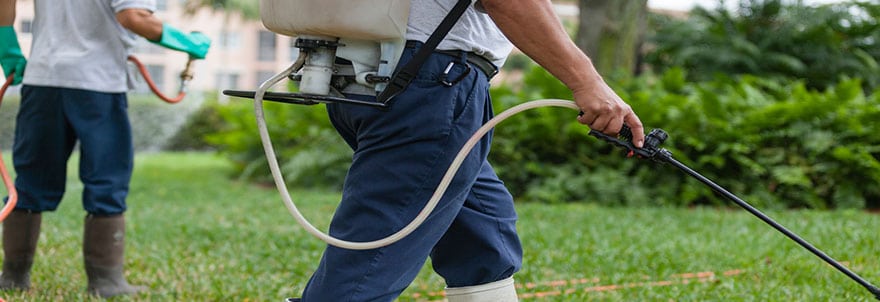Earwig Control

Earwigs are the most readily recognized insect pests in home gardens. They are known to damage seedling vegetables, annual flowers, maturing soft fruit and corn silks. Although they do cause some problems, they are known to also play a beneficial role in the landscape and are important predators to aphids.
Species:
They are several species, but the most common one found in gardens of California is the European Earwig (Forficula auricularia). The striped earwig (Labidura riparia) is also another species you might come across in Southern California. It is attracted to light and has a very disagreeable odor if crushed but this earwig is not attracted to plants.
Identification:
The adult earwig can be identified by a pair of prominent appendages that resemble forceps at the tail end of the body. Adult body is about a half inch long and is reddish brown in color. If defending itself the forceps can be somewhat curved on the male and straight on the female. Immature earwigs look similar to adults but they are smaller and lack wings. Most species have wings located under short, hard wing covers, but rarely fly.
Life Cycle:
Earwigs are most active at night and hide during the day in a cool, moist place. Eggs are laid under the soil in cells dug by the female. Eggs hatch into small, white nymphs and will remain in the cell being fed by their mother until their first molt. Generally there is one generation a year but the female earwig does produce two broods a year. Part of the earwig population will hibernate during the winter as pairs buried in the cells in the soil. In a milder California climate they might be active all year.
Damage:
European earwigs feed on a variety of dead and living organisms, including insects, mites, growing shoots of plants, soft fruit and sweet corn. They also feed on soft-bodied insects such as aphids and insect eggs. If a yard is planted to turf and contains mature ornamental plants, earwigs are unlikely to be of concern.
Identification of Damage:
Evidence of earwigs can include damaged seedlings missing all or parts of their leaves and stem. On corn, they feed on silks and prevent pollination. If fruit trees are attacked there will be leaves with irregular holes in them or chewed around edges, similar to what you would find with a caterpillar problem. Strawberries can also be a target but snails and slugs leave slim trails; if no trail is eveident then it could be an earwig. Targeted flowers include Zinnias, Marigolds and Dahlias.
Locations:
Earwigs are mostly found out of doors but they could be inside when it is hot and dry outside. They do not pose a health hazard but will die because there is not enough for them to eat indoors.
Management:
Earwigs can be vacuumed or swept up. Be sure to kill and dispose of them so there is not a re-invasion. Earwig problems can be prevented by sealing of cracks and entry points. Removing materials outside such as Ivy growing up walls, debris, wood piles, piles of newspapers or organic matter will help discourage hiding places. Also try to prevent water and moisture around the building by repairing drain spouts, improving draining systems, and ventilating crawl spaces in order to let in as much air as possible. If earwigs are attracted to light, replace the bulb with yellow or sodium vapor lights.
Ignoring the problem will not make it go away, and this is why Brezden Pest Control’s San Luis Obispo pest control specialists are dedicated to offering as much information about pests as possible on our web site. We use our web site as more than just a business card. To keep our loyal customers educated, we’re writing valuable educational articles every month on the topic of pest control.
